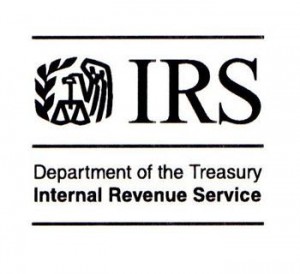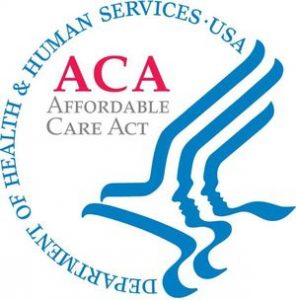Carol V. Calhoun spoke at the 2017 Stable Value Investment Association (SVIA) Spring Seminar on “Outlook on Employee Benefits.” The Meeting Booklet, and outlines of each of the topics covered, are below:
MEETING BOOKLET
HANDOUT
“A Trump Presidency: What Does It Mean for Employee Benefits?”
DOL FIDUCIARY RULES
- Issue: protecting plan participants and retirement investors from receiving advice that is in the interest of the adviser rather than the participant
- Monitoring of formal advice programs has been in place before the fiduciary rule. See DOL Advisory Opinion Letter 2007-01A, which said, “If Subsidiary B is a fiduciary by virtue of rendering investment advice within the meaning of 29 CFR 2510.3-21(c), the provision of such investment advice involving self-dealing will subject the fiduciary adviser to liability under section 406(b) of ERISA.”
- The DOL issued proposed regulations in 2010 and 2015. Each iteration of the rules has attempted to balance more carefully a desire to promote participant education with a desire to prohibit advisors from operating in their own self-interest.
- New rule covers more ground, including rollover distribution conversations and retirement readiness tools.
- Plan sponsors will need to be aware of circumstances in which there has been a “recommendation” made regarding the investment, distribution or account management of a retirement account.
FIDUCIARY BEST PRACTICES: ORGANIZATION OF COMMITTEES
- Determine the structure of the committee including appropriate size, membership, designated responsibilities, and frequency of meetings.
- Clear appointment process (name or function, but not both)
- Both selection and training designed to ensure expertise
- Ongoing monitoring, e.g., regular reports to the company’s board of directors
- Document all committee actions and decisions.
IMPACT OF UNCERTAINLY ON THE REGULATORY FRONT
- Affordable Care Act
- MacArthur Amendment
- Would generally preserve ban on preexisting conditions exclusions, coverage up to age 26, and essential health benefits
- Would increase age-related spread on premiums from 3:1 to 5:1.
- Would allow applications for waivers from essential health benefits and from community rating rules (except gender). Waiver of health status rules would need to be accompanied by participation in federal or state high risk pools.
- Alternative: Try to get the ACA to implode by not appropriating funds to cover cost-sharing reductions.
- For people less than 250% of the federal poverty line, insurance companies may not charge deductibles, but are supposed to be reimbursed by the federal government
- Not clear whether this is to be funded by special appropriation (which Congress has failed to pass).
- Obama administration funded it out of general appropriation, was sued by the House.
- MacArthur Amendment
- Changes to HSAs
- Ryan would like to increase the HSA limit to the maximum out-of-pocket cost.
- Can act almost as a retirement account, but targeted to medical costs.
- Downside is that they are available only with a high deductible health plan.
- Hostility to socially responsible investing/economically targeted investments
- Interpretive Bulletin 94-01, 29 C.F.R. 2509.94–1: “if the above requirements are met, the selection of an ETI, or the engaging in an investment course of action intended to result in the selection of ETIs, will not violate section 404(a)(1)(A) and (B) and the exclusive purpose requirements of section 403.”
- Interpretive Bulletin 08-01, 29 C.F.R. 2509.08-1: “In light of the rigorous requirements established by ERISA, the Department believes that fiduciaries who rely on factors outside the economic interests of the plan in making investment choices and subsequently find their decision challenged will rarely be able to demonstrate compliance with ERISA absent a written record demonstrating that a contemporaneous economic analysis showed that the investment alternatives were of equal value.”
- Interpretive Bulletin 2015-01 withdrew Interpretive Bulletin 08-01, and returned to the guidance of Interpretive Bulletin 94-01.
- Will we go back to Interpretive Bulletin 08-01?
- Diminished enforcement of protections for LGBT employees.
- Federal employment
- Retained Executive Order 13672, which prohibited contractors from discriminating on the basis of sexual orientation or gender identity.
- Eliminated Executive Order 13673, which required companies wishing to contract with the federal government to show that they had complied with various federal laws and other executive orders.
- Other employment
- EEOC’s Strategic Enforcement Plan (SEP): treat discrimination based on sexual orientation or gender identity as sex discrimination under Title VII
- Several cases won, mostly on transgender issues
- In U.S. EEOC v. Scott Medical Health Center, District Court for the Western District of Pennsylvania denied a motion to dismiss case on discrimination against a gay employee.
- Will this administration continue this policy? And if not, what is the prospect for participant lawsuits?
- Federal employment
KEY CONCERNS OF PLAN SPONSORS, PARTICIPANTS, AND THOUGHTS ON HOW BEST TO NAVIGATE?
- Executive Order of April 21: Secretary of the Treasury to identify in an interim report to the President all significant tax regulations issued by the Department of the Treasury on or after January 1, 2016 that:
- impose an undue financial burden on United States taxpayers;
- add undue complexity to the Federal tax laws; or
- exceed the statutory authority of the Internal Revenue Service.
Identification within 60 days, report on mitigation within 150 days.
- Decline in both regulations and agency staffing means that plan sponsors and participants will be looking less to the federal government for guidance.
- States likely to become more involved, meaning you need to look at 50 state laws instead of one federal law. See, e.g., state proposals to require employer participation in IRAs.
- Lack of regulations means fewer defenses to participant lawsuits.

 With the IRS no longer issuing rulings or determination letters on individually designed qualified plans or
With the IRS no longer issuing rulings or determination letters on individually designed qualified plans or  The recent flurry of activity around the Affordable Care Act (ACA) has many people confused about where it stands, and what the employer’s obligations are. The following summarizes the activity so far:
The recent flurry of activity around the Affordable Care Act (ACA) has many people confused about where it stands, and what the employer’s obligations are. The following summarizes the activity so far:  In recent years, several states have adopted laws requiring private (nongovernmental) employers to set up payroll deduction individual retirement accounts, individual retirement annuities, or Roth IRAs (collectively, IRAs) for their employees. Certain localities have also indicated an interest in setting up such programs. ERISA by its terms generally preempts any and all state laws relating to any employee benefit plan regulated by ERISA, other than state laws that regulate insurance, banking, or securities. ERISA
In recent years, several states have adopted laws requiring private (nongovernmental) employers to set up payroll deduction individual retirement accounts, individual retirement annuities, or Roth IRAs (collectively, IRAs) for their employees. Certain localities have also indicated an interest in setting up such programs. ERISA by its terms generally preempts any and all state laws relating to any employee benefit plan regulated by ERISA, other than state laws that regulate insurance, banking, or securities. ERISA 
 Based on both campaign promises and Donald Trump’s plans for his first 100 days, a Trump presidency is likely to make major changes in employee benefits law. The most significant ones are likely to be:
Based on both campaign promises and Donald Trump’s plans for his first 100 days, a Trump presidency is likely to make major changes in employee benefits law. The most significant ones are likely to be: